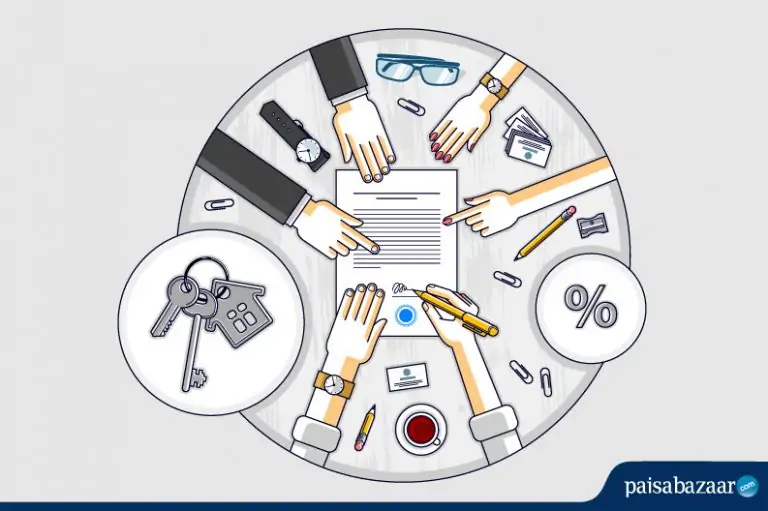
If you are in the market, looking out for a home loan, you may be having a hard time understanding the complicated home loan terms—especially if you are new in the market. To help you make an informed decision with a clear mindset, here are some of the key terminologies associated with a home loan.
1. Partial Disbursement
This refers to the case when the loan amount is released by the lender in stages. Such a case occurs when the property for which the loan is availed is under construction.

Get Home Loan at the Low Interest Rate from Top Lenders Apply Now
2. Full Disbursement
This refers to the case when the loan provider disburses the full loan amount at one go.
3. Equated Monthly Installment (EMI)
This is the amount to be paid by the borrower every month, towards repayment of the availed home loan. EMI amount of home loan is the combination of principal amount and the applicable rate of interest.
4. Pre-EMI
In case partial disbursement of a loan, only monthly interest payments are made on the amount disbursed, before the actual EMIs begin. Such a payment is called Pre-EMI.
5. Margin
It is the difference between the maximum loan amount offered by the lender and the actual market value of the property. In other words, Margin may also be understood as the down payment to be made by the borrower.
6. Balance Transfer/Refinance
It is a special facility offered to existing home loan borrowers, who wish to move their home loan account to a new lender and pay off the outstanding amount with the proceeds from a new loan.
Also Check: List of Top Banks Offering Home Loan Balance Transfer
7. Prepayment Penalty/Charges
This is the additional amount to be paid by the borrower while making a prepayment. It is important to note that there are no prepayment charges applicable to individual borrowers. However, standard charges, as prescribed by the lender, will be applicable to non-individual borrowers.
8. Loan to value ratio (LTV)
LTV ratio is the ratio of the maximum loan amount offered by the lender to the actual market value of the property.
9. Credit Score/CIBIL Score
This score represents the evaluation of a borrower’s ability to repay the loan. Credit score is primarily based on the credit report and other information sourced from various credit bureaus.
10. Pre-Approved Property
Some lending institutions already have a list of pre-approved properties from authentic, trustworthy builders that are legally verified and evaluated on various parameters. Choosing a pre-approved property allows the buyer to stay assured and avoid the hassle of legal and technical evaluation.
11. Offer Letter
Once a loan has been approved/sanctioned, the lending institution releases an offer letter to the borrower, containing loan-related information such as:
- Loan amount
- Rate of interest and its type (fixed/variable)
- EMI amount
- Tenure of the loan
- Details of the scheme
- Terms and conditions of the loan
It is important to note that the loan is disbursed after the completion of documentation and property verification.

Get Home Loan at the Low Interest Rate from Top Lenders Apply Now
12. Amortisation schedule
This refers to a detailed table of recurring loan payments that contains a bifurcation of the principal component and the interest charged in an EMI till the loan is completely repaid.
13. Security
This is the asset provided by the borrower to the lender as collateral for the availed loan. In most cases, the security required is the equitable mortgage of the property for which the loan is availed.
14. Repayment tenure
This is the time frame under which the borrower has to fully repay the loan.
15. Default
This occurs in a case when the borrower fails to timely pay the EMI amount. Certain penal interest is levied by the lending institution on subsequent EMIs in case of default.
Keeping the above terminologies in mind will definitely help you better understand the terms and conditions of any lending institution, to make a sound judgement.

Get Home Loan at the Low Interest Rate from Top Lenders Apply Now